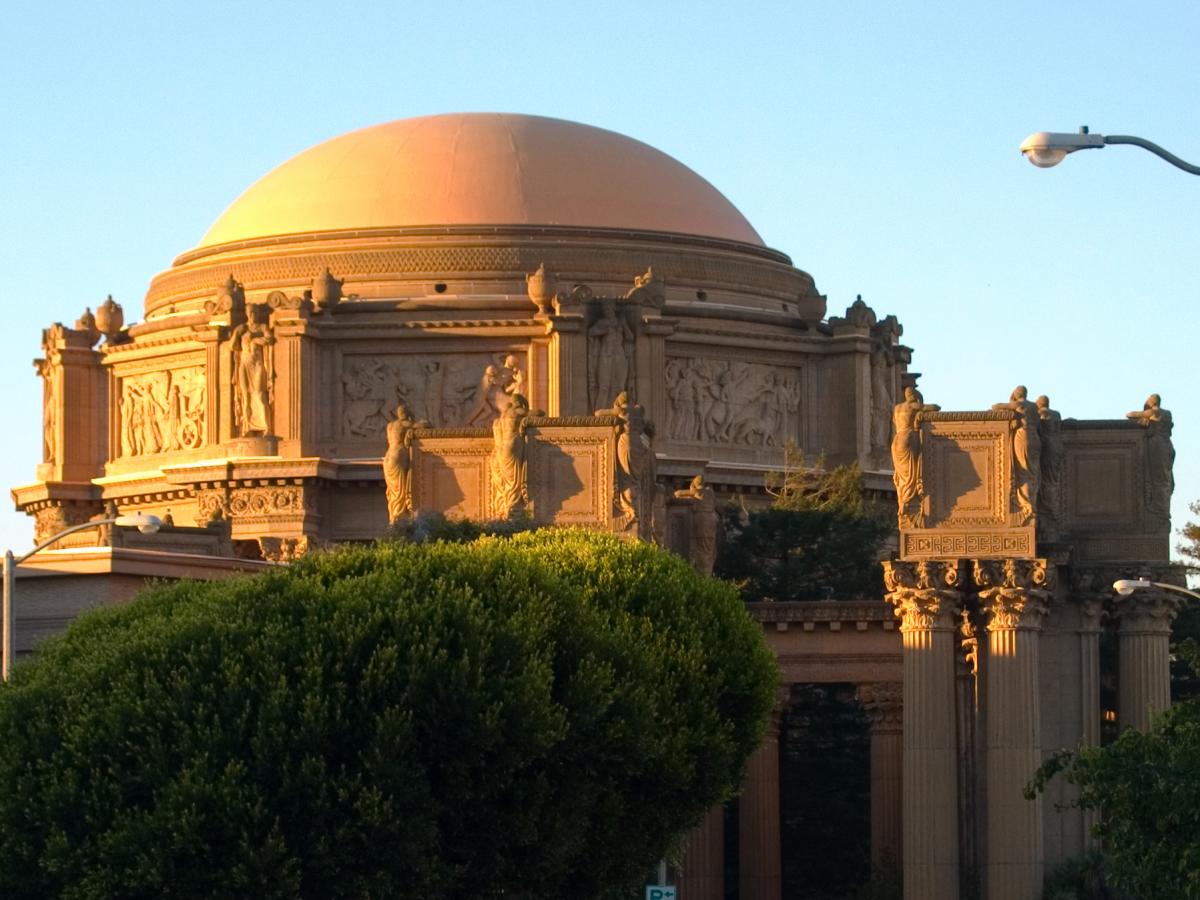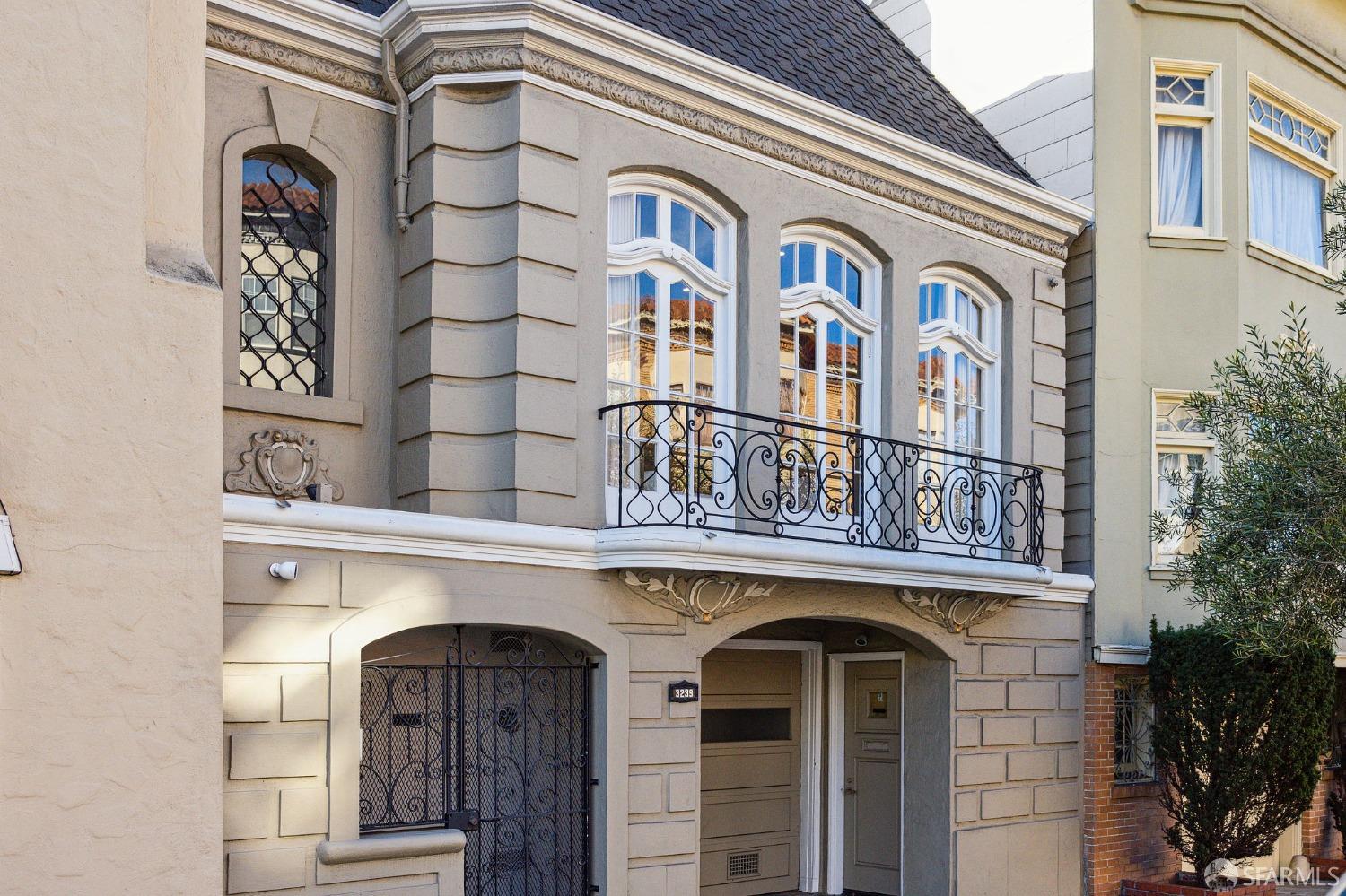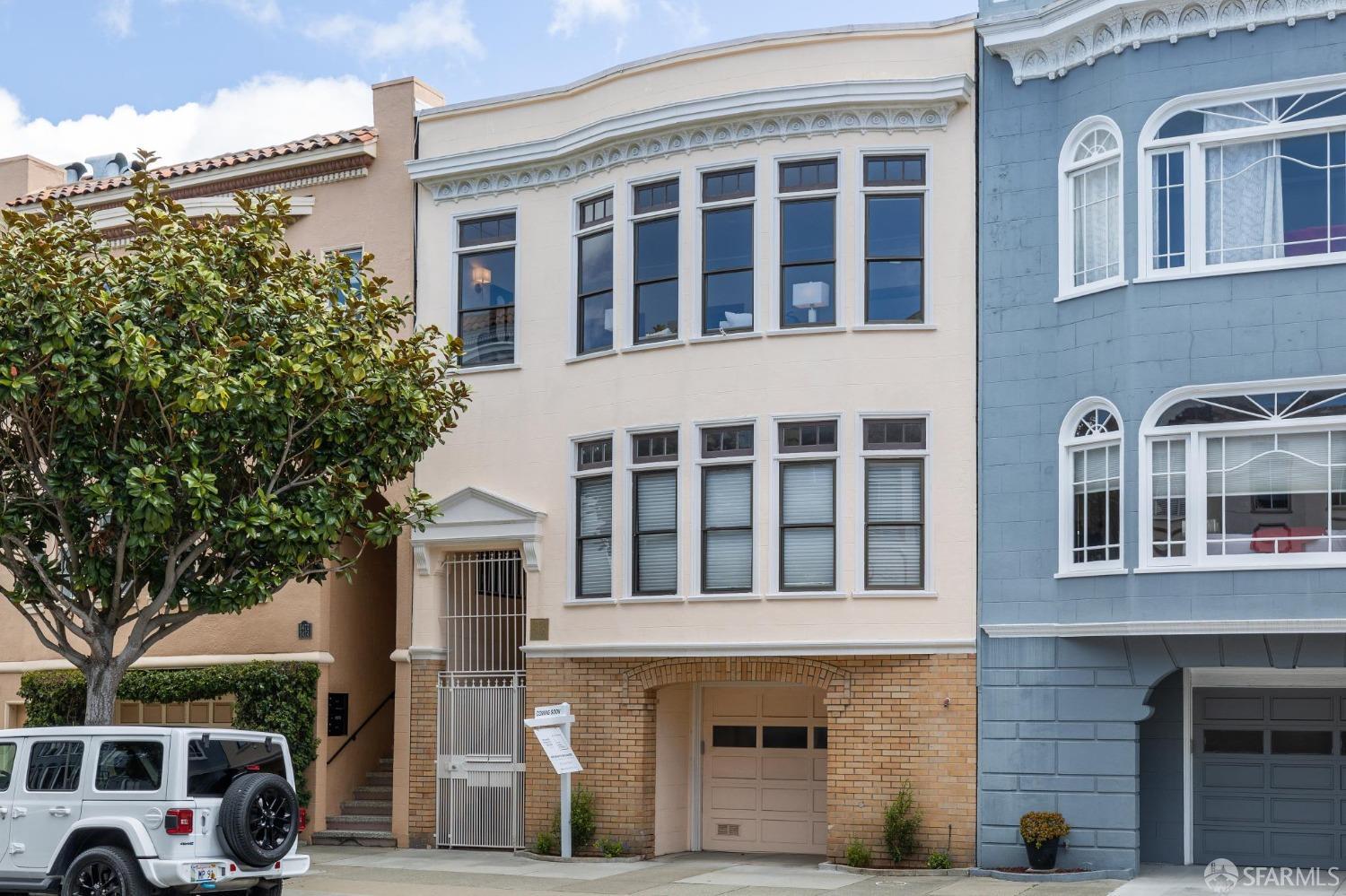
With spectacular views of the Golden Gate Bridge, Alcatraz, and the Bay, the Marina is one of the most scenic and user-friendly neighborhoods in the city. Thanks to its many amenities – museums, shops, restaurants, and a grassy flat stretch of land perfect for kite flying, running, or sunning – the Marina is desirable real estate. The side streets are lined with cozy old-fashioned flats distinguished by art deco design.
 Palace of Fine Arts: Created as the landmark building for the 1915 Panama-Pacific International Exposition, the Palace of Fine Arts is indisputably the Marina's (if not all of San Francisco's) architectural grand dame. Though the structure was specifically designed to honor the completion of the Panama Canal (and was intended to be temporary), its construction and the exposition itself were symbols to city residents and to the world that San Francisco had overcome -- and in fact risen above -- the catastrophe of the 1906 earthquake and its consuming fire. Today the Palace of Fine Arts is home to one of the city's most beloved museums, the Exploratorium, which hosts more than 600 science and art exhibits, including the Tactile Dome, an experiential maze designed to disorient the senses. Call ahead to find out about special events and exhibits. 3601 Lyon St., (415) 397-5673. (Exploratorium Web site; The Palace of Fine Arts: A Brief History of the Exploratorium's Home)
Palace of Fine Arts: Created as the landmark building for the 1915 Panama-Pacific International Exposition, the Palace of Fine Arts is indisputably the Marina's (if not all of San Francisco's) architectural grand dame. Though the structure was specifically designed to honor the completion of the Panama Canal (and was intended to be temporary), its construction and the exposition itself were symbols to city residents and to the world that San Francisco had overcome -- and in fact risen above -- the catastrophe of the 1906 earthquake and its consuming fire. Today the Palace of Fine Arts is home to one of the city's most beloved museums, the Exploratorium, which hosts more than 600 science and art exhibits, including the Tactile Dome, an experiential maze designed to disorient the senses. Call ahead to find out about special events and exhibits. 3601 Lyon St., (415) 397-5673. (Exploratorium Web site; The Palace of Fine Arts: A Brief History of the Exploratorium's Home)
Crissy Field: In a relatively short period of time -- 1921 to 2001 -- Crissy Field has been transformed from one of the country's most important and active military airstrips into an abandoned stretch of crumbling asphalt into the recent crowning achievement of the Golden Gate National Parks Association. With over $34 million in grants and donations (the vast majority were private gifts under $100), the GGNPA has fulfilled its vision of creating a space that synthesizes recreational public space with environmental restoration. Walkers and joggers have embraced the field's shoreline path, known as the Golden Gate Promenade, and on sunny days, kids, picnickers and Frisbee enthusiasts blanket the grassy 28-acre expanse. Cyclists have their own bike-only path, and, when the wind is good, world-class sailboarders can be seen skipping and soaring across the water. On the environmental end, huge portions of Crissy Field's original airstrip have been pulled up to allow for the attempted restoration of 20 acres of original tidal marshland. So far, the effort looks promising; for the first time in 60 years, some native animals are timidly beginning to show their faces in the area. The Crissy Field Conservation Center is a progressive, multicultural community environmental center providing various programs addressing the wide range of issues and concerns Crissy Field faces as a park straddling urban and environmental boundaries. (GGNPA Web site)
Fort Mason: Like Crissy Field, Fort Mason is a former military enclave now protected under the auspices of the Golden Gate National Parks Association. Visitors will most likely want to focus on the lower buildings and piers, officially know as Fort Mason Center. The center provides a wealth of cultural and educational societies, museums and nonprofits, including but not limited to the San Francisco African American Historical and Cultural Society, the Museum of Craft and Folk Art and the Museu ItaloAmericano. Fort Mason hosts numerous performances, festivals and exhibits throughout the year, so be sure to check the calendar at www.fortmason.org or call (415) 441-3400 before you go. (Fort Mason Hostel)


